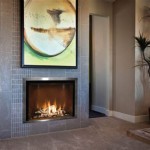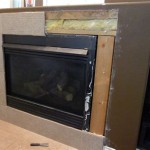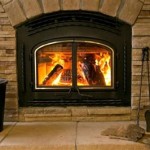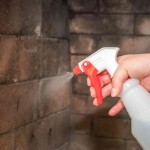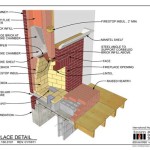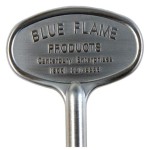Child Proof Gas Fireplace Screens: Ensuring a Safe Home Environment
Gas fireplaces offer warmth and ambiance, but they also present a potential hazard for young children. The glass front of a gas fireplace can become extremely hot during operation and remain so for a significant period afterward. This poses a significant risk of burns. Therefore, implementing effective childproofing measures, particularly through the use of specialized fireplace screens, is crucial for maintaining a safe home environment. This article will explore the importance of child-proof gas fireplace screens, the features to look for when selecting a screen, and best practices for installation and maintenance.
The primary danger associated with gas fireplaces stems from the high surface temperatures of the glass enclosure. Children are naturally curious and may be tempted to touch the glass, unaware of the potential for severe burns. Burns can cause intense pain, scarring, and require extensive medical treatment. Preventing these injuries is paramount, and a properly installed child-proof fireplace screen is a vital component of a comprehensive safety strategy.
Beyond the risk of burns, gas fireplaces also present other, less direct, safety concerns. Improper ventilation can lead to the build-up of carbon monoxide, a colorless and odorless gas that can be deadly. While not directly related to the screen itself, ensuring the fireplace is professionally installed and regularly inspected for proper ventilation is an essential part of overall fireplace safety. A child-proof screen should not impede airflow or interfere with the fireplace's ventilation system.
Key Features of Child-Proof Gas Fireplace Screens
Selecting the appropriate child-proof gas fireplace screen requires careful consideration of several key features. The screen must provide a robust barrier between the child and the hot glass surface, while also being durable and easy to use. The following features are essential for ensuring the effectiveness of a child-proof gas fireplace screen:
1. Sturdy Construction and Heat Resistance: The screen should be constructed from high-quality materials that can withstand high temperatures and resist damage from repeated use. Heavy-gauge metal, such as steel or iron, is generally preferred for its durability and heat resistance. The screen's frame should be robust and securely welded to prevent it from bending or collapsing under pressure. The finish should also be heat-resistant to prevent peeling or chipping, which could expose sharp edges.
The mesh or bars used to create the screen should be spaced closely enough to prevent small fingers from reaching through and touching the glass. A fine mesh is often considered the safest option, as it provides a complete barrier. The screen should be designed to dissipate heat effectively, minimizing the temperature of the screen's surface. This reduces the risk of burns even if a child briefly touches the screen.
2. Secure Attachment Mechanism: The screen must be securely attached to the fireplace to prevent it from being easily dislodged by a child. Several attachment methods are available, including screws, magnetic fasteners, and tension rods. Screws provide the most secure attachment, but they require drilling into the fireplace surround, which may not be desirable for aesthetic or structural reasons. Magnetic fasteners offer a less permanent solution, but they must be strong enough to withstand significant force. Tension rods can be used to secure the screen within the fireplace opening, but they may not be suitable for all fireplace designs.
Regardless of the attachment method, the screen should be tested to ensure it is firmly in place and cannot be easily removed by a child. Regular checks should be performed to verify that the attachment mechanism remains secure over time. Any signs of loosening or damage should be addressed immediately.
3. Full Coverage and Proper Sizing: The screen must completely cover the glass surface of the fireplace to provide maximum protection. It should extend beyond the edges of the glass to prevent children from reaching around the screen and touching the hot surface. Accurate measurements of the fireplace opening are essential to ensure a proper fit. A screen that is too small will leave gaps that a child could exploit, while a screen that is too large may be difficult to install and could potentially damage the fireplace surround.
Consider the depth of the screen when selecting a model. A screen that is too shallow may not provide adequate clearance between the child and the hot glass. A deeper screen can provide an added layer of protection, reducing the risk of burns even if a child reaches towards the screen. Custom-made screens are an option for fireplaces with unusual dimensions or configurations. These screens can be tailored to provide a perfect fit and maximum protection.
4. Child-Resistant Latches and Locks: Some child-proof fireplace screens incorporate latches or locks to prevent children from opening the screen. These features add an extra layer of security, particularly for curious toddlers who may be tempted to explore the fireplace. The latches or locks should be designed to be difficult for children to operate, but easy for adults to use. Magnetic latches or spring-loaded mechanisms are common options.
The placement of the latches or locks is also important. They should be positioned in a location that is out of reach for young children, or require a specific sequence of actions to open. Regular testing of the latches or locks is essential to ensure they are functioning properly. Any signs of wear or damage should be addressed immediately to maintain the integrity of the child-proofing system.
Installation and Maintenance Best Practices
Even the most effective child-proof gas fireplace screen will not provide adequate protection if it is not properly installed and maintained. Following these best practices is essential for ensuring the ongoing safety of children in the home:
1. Professional Installation: While some fireplace screens can be installed by homeowners, professional installation is often recommended, particularly for complex models or fireplaces with unusual configurations. A professional installer has the expertise and tools necessary to ensure the screen is securely attached and properly aligned. They can also identify any potential safety issues with the fireplace itself and provide recommendations for addressing them.
Professional installers will also ensure that the screen meets all applicable safety codes and regulations. This is particularly important for new construction or renovations, where building codes may require specific child-proofing measures. A properly installed screen can provide peace of mind, knowing that the fireplace is as safe as possible.
2. Regular Inspections: The fireplace screen should be inspected regularly for any signs of damage, loosening, or wear. Check the attachment mechanism to ensure it is still secure. Inspect the mesh or bars for any breaks or gaps. Examine the frame for any bending or warping. If any issues are identified, they should be addressed immediately. Minor repairs may be possible, but in some cases, replacement of the screen may be necessary.
Regular inspections should also include cleaning the screen to remove dust and debris. A clean screen will allow for better heat dissipation and visibility. Avoid using abrasive cleaners that could damage the screen's finish. A mild soap and water solution is generally sufficient for cleaning.
3. Education and Supervision: While a child-proof fireplace screen is an important safety measure, it is not a substitute for parental supervision and education. Children should be taught about the dangers of the fireplace and instructed not to touch the glass or get too close to the screen. Explain that the fireplace is hot and can cause burns. Reinforce these lessons regularly, particularly as children grow older and become more curious.
Supervision is particularly important when the fireplace is in use. Never leave children unattended near a burning fireplace. Even with a child-proof screen in place, there is still a risk of injury if a child attempts to climb on or around the fireplace. Active supervision can help prevent accidents and ensure the safety of children in the home.
4. Consider Additional Safety Measures: In addition to a child-proof fireplace screen, consider implementing other safety measures to further protect children from the hazards of gas fireplaces. Install carbon monoxide detectors throughout the home, particularly near sleeping areas. Ensure the fireplace is properly ventilated to prevent the build-up of carbon monoxide. Keep flammable materials away from the fireplace. Consider using a fireplace gate to create a larger barrier around the fireplace, preventing children from getting too close.
These additional safety measures can provide an added layer of protection, particularly for young children who are not yet able to understand the dangers of the fireplace. A comprehensive approach to fireplace safety is essential for creating a safe home environment for families with young children.
Choosing the Right Type of Screen
There are several types of child-proof gas fireplace screens available, each with its own advantages and disadvantages. The best type of screen for a particular home will depend on factors such as the size and style of the fireplace, the age and activity level of the children, and the homeowner's budget. Some of the most common types of child-proof gas fireplace screens include:
1. Standard Metal Screens: These are the most common type of fireplace screen and are typically made of steel or iron. They provide a basic level of protection against burns and are relatively inexpensive. However, they may not be as effective at preventing small fingers from reaching through the mesh or bars. They can be attached with screws or tension rods.
2. Fine Mesh Screens: These screens feature a fine mesh that provides a complete barrier against the hot glass. They are more effective at preventing burns than standard metal screens. However, they may be more expensive and can sometimes obstruct the view of the flames.
3. Glass Door Enclosures: While not technically a screen, glass door enclosures offer a significant level of protection against burns. They completely enclose the fireplace opening and prevent children from touching the glass. However, they can be expensive and may require professional installation. Ensure the glass used is tempered and heat-resistant.
4. Freestanding Fireplace Guards: These guards are portable and can be placed around the fireplace to create a barrier. They are a good option for temporary situations, such as when guests with young children are visiting. However, they may not be as secure as permanently installed screens and can be easily moved by adults.
When choosing a child-proof gas fireplace screen, it is important to consider the specific needs and risks of the home environment. A thorough assessment of the fireplace and the children's behavior is essential for selecting the most appropriate type of screen.

How To Childproof Your Fireplace Baby Proof

Fireplace Child Pet Protection Firescreen Babyproof Co Za

Secured Fireplace Safety Screen Babysecure Inc

Gas Heater And Fireplace Safety Babyproof Co Za

Gas Heater And Fireplace Safety Babyproof Co Za

How To Baby Proof Fireplace With A Safety Screen Proofing

Gas Heater And Fireplace Safety Babyproof Co Za

3 Ways To Baby Proof A Fireplace Wikihow

Babyproof Your Hearth And Fireplace With These Simple Tips Tricks

Before Amp After A Stylish Babyproof Fireplace Baby Proof Proofing Toddler
Related Posts

